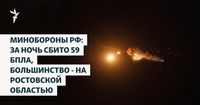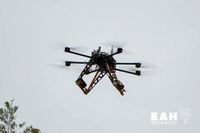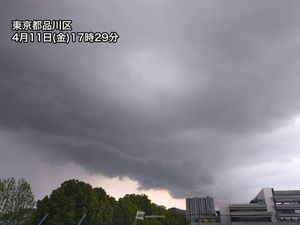In the early hours of March 23, 2025, a coordinated assault of Ukrainian drones struck multiple regions across Russia, marking one of the most intense air incursions in recent months. According to reports from the Russian Ministry of Defense, officials confirmed the destruction of 59 drones over seven Russian regions, with substantial efforts to repel the attacks successively ongoing.
Among the affected areas, the Rostov region bore the brunt of this mass drone assault. Governor Yuri Slyusar reported that due to a drone strike on the Morozovsk-Tsimlyansk highway, a vehicle caught fire, resulting in the tragic death of one individual. The identity of the deceased remains unknown, as local authorities work to make the necessary identifications.
In a series of events later that night, 29 drones were shot down over Rostov, part of the total that included 20 destroyed in the Astrakhan region. The rest of the interceptions involved three drones over Voronezh and Volgograd, two over the Crimean region, and one each over Kursk and Saratov, marking another significant escalation in the ongoing conflict.
Governor Slyusar confirmed that the military successfully repelled attacks in at least six districts of the Rostov region: Millerovsky, Morozovsky, Kamensky, Tarasovsky, Sholokhovsky, and Neklinovsky. Fortunately, despite the destructive capabilities of these drones, no injuries were reported among residents, although windows were damaged in a house in Khutor Kayukovka, in the Tarasovsky district.
Meanwhile, similar retaliatory actions were noted across other regions. Notably, in Astrakhan, debris from downed drones led to some infrastructural damage, although specific details regarding damage to residential areas remained scant. Incident reports indicated that residents heard explosions and gunfire as air defenses engaged incoming targets.
The events of March 20 also highlighted the increasing threat of drone warfare, where Russian air defense reportedly engaged and shot down 132 Ukrainian drones targeting various regions, emphasizing a need for heightened vigilance amid these airspace conflicts.
Regional authorities have taken precautionary measures, temporarily restricting flight operations at airports in Saratov and Volgograd early in the morning following the attacks to ensure safety for civilian flights. This safety protocol was lifted shortly after with no reported environmental disruptions noted.
Adding to the chaos, the Russian Emergency Situations Ministry indicated that four firefighters were injured when a drone struck a gas station in Gorlovka, a town in the Donetsk region. This incident, although separated from the drone activities in the regions of concern, underscores the broadening impacts of drone strikes in local infrastructures.
As these military engagements unfold, officials from various regions, including Voronezh's Governor Alexander Gusev, confirmed minimal damage, reinforcing that defensive measures are protecting civilians from major harm. In his remarks, he credited the efficiency of Russian air defenses and adherence to safety protocols amidst the waves of attacks.
In light of the intense military confrontations, it's evident that the conflict's realities are evolving. Analysts are considering the implications of such drone warfare tactics on urban areas and the potential for heightened humanitarian crises as both sides brace for intensified engagements.
In summary, the drone attacks on March 23, which led to one confirmed fatality and extensive military responses, reflect escalating tensions between Ukraine and Russia, underlining a pressing need for conflict resolution as civilian safety becomes increasingly jeopardized in these ongoing hostilities.







